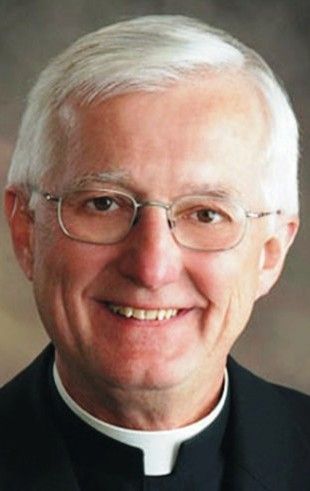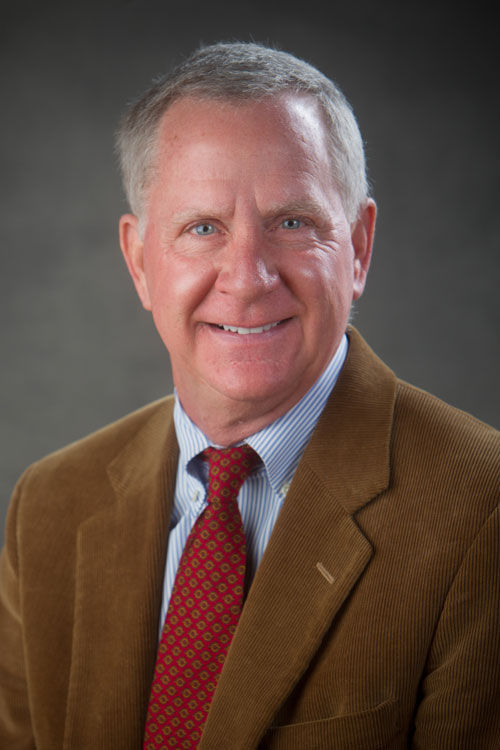Davenport Diocese Recovering a Decade after Bankruptcy
By Deirdre Cox Baker
Amos moved to Davenport from Cleveland, Ohio, city of his birth and his home for six decades. Weeks before he moved, he sat with a reporter from the Quad-City Times and promised he would work to promote healing among abuse victims and also to restore financial health to the diocese. Ten years later, the diocese still is recovering from the bankruptcy, trying to meet the spiritual needs of nearly 100,000 Catholics in the 78-parish diocese that covers 22 counties in the southeast part of Iowa. Amos knew of the bankruptcy decision before he left Ohio. He accepted the decision “with humility and concern for the survivors of abuse and for the diocese,” according to spokesman, Deacon David Montgomery. Recovering financially The diocese, its insurance company and a creditors committee agreed a decade ago to a $37 million bankruptcy settlement; the diocese turned over the deed to the St. Vincent Center and paid $13.5 million. Insurance covered $19.5 million. According to chief financial officer Char Maaske, the diocese was valued at $1 million after the bankruptcy. Parishes were asked to pass the hat to fund the bishop’s November 2006 installation at St. John Vianney Catholic Church in Bettendorf. In 2008, the diocese launched a $22 million capital campaign through The Catholic Foundation, a nonprofit entity. The goal was reached but also was eventually reduced 10 percent as donors died or moved away, Montgomery said. There was $19.5 million donated to The Catholic Foundation, and $10.5 million has been paid out. The remaining funds provide support for the diocese and its many ministries, including all Catholic schools, faith education, seminary formation and deacon expenses. Total net assets of the diocese are now $7.5 million and include the organization’s buildings and grounds. The diocese has nine fewer staff members and has had a flat budget for the past two years, Montgomery said. In 2015, the diocese reported $4,097,338 in revenue and $4,173,186 in expenses for a net loss of $75,848. It is in the middle of the Annual Diocesan Appeal, which provides 75 percent of its financial costs every year. Emotional recovery
Diocese officials rebut Levien's claims, especially the "bare minimum" charge, and list numerous steps they have taken. Officials say they have complied with all bankruptcy court orders, including each of 18 points spelled out for "non-monetary" responsibilities. There is no sunset on the services the diocese provides, Amos said. The diocese continues to pay for counseling for survivors, as needed, and for safe environment training. That’s not enough, according to Steve Theisen, state leader of the Survivors Network of those Abused by Priests, or SNAP. “There are still victims out there,” he said. "They are very damaged, and they need much more help than counseling." Some, for example, can’t work or provide for themselves, he said. There are enablers to the abuse, or church workers other than priests, whose names were not brought forward. “They want first to protect the church’s reputation,” Theisen said. Background checks Background checks are now conducted on all clergy, employees and anyone working alone with children. More than 15,500 people have received training since July 2003 with 5,000 still active in the diocese. But Levien said there are dozens of adults who were attacked as children and still suffer in silence and shame. “We know that’s the case,” he said. In one example, Levien suggests the bishop continue to visit all of the parishes where the abuse took place. "These wounds continue, and the damage has not ended," he said. “The more outreach the better.” Amos visited victims and their family members in 54 affected parishes about six years ago. He hosted “atonement services” in each, and some were very powerful, he said. Survivor speaks up A survivor of clergy abuse from Albany, Ill., was not so taken by the services. Al Burke, 82, was abused 70 years ago by the Rev. Thomas Hackett, who served at St. Joseph Catholic Church, DeWitt. Burke served on the diocese's committee of survivors appointed by the U.S. Bankruptcy Court and attended some of the "atonement services" involving the bishop. The outreach was not enough, he said. Burke is one of three brothers who were abused by the same priest, who died in 1951. He does not trust the leadership of the Catholic church, both priests and bishops, and has left the faith. While Burke appreciates the work of Pope Francis on clergy abuse, he said bishops need to be more forthright about accepting responsibility for transferring abusive priests. "Counseling for victims is not the issue," he said. "We need honesty from the bishops, including Bishop Amos." Assumption athletic fields Land involved in the diocese bankruptcy recently changed hands. In 2009, the trustee sold 45 acres of land for $3.35 million to St. Ambrose University. This was part of the 50-acre campus where the St. Vincent headquarters are located. It was transferred again to Assumption High School this past March, and sports practice fields are now under construction on the property. The diocese bought back the headquarters for $3.5 million in 2010. This includes five acres of land and distinctive brick buildings. The interior has been renovated; it includes the diocesan offices and an area for retired priests. Amos described the area as "independent living" for the priests. If they require further medical care, they move to other facilities, including several who now live in the Kahl Home in Davenport. As for clergy abuse victims, a support group meets once a month in this area.
|
.
Any original material on these pages is copyright © BishopAccountability.org 2004. Reproduce freely with attribution.

